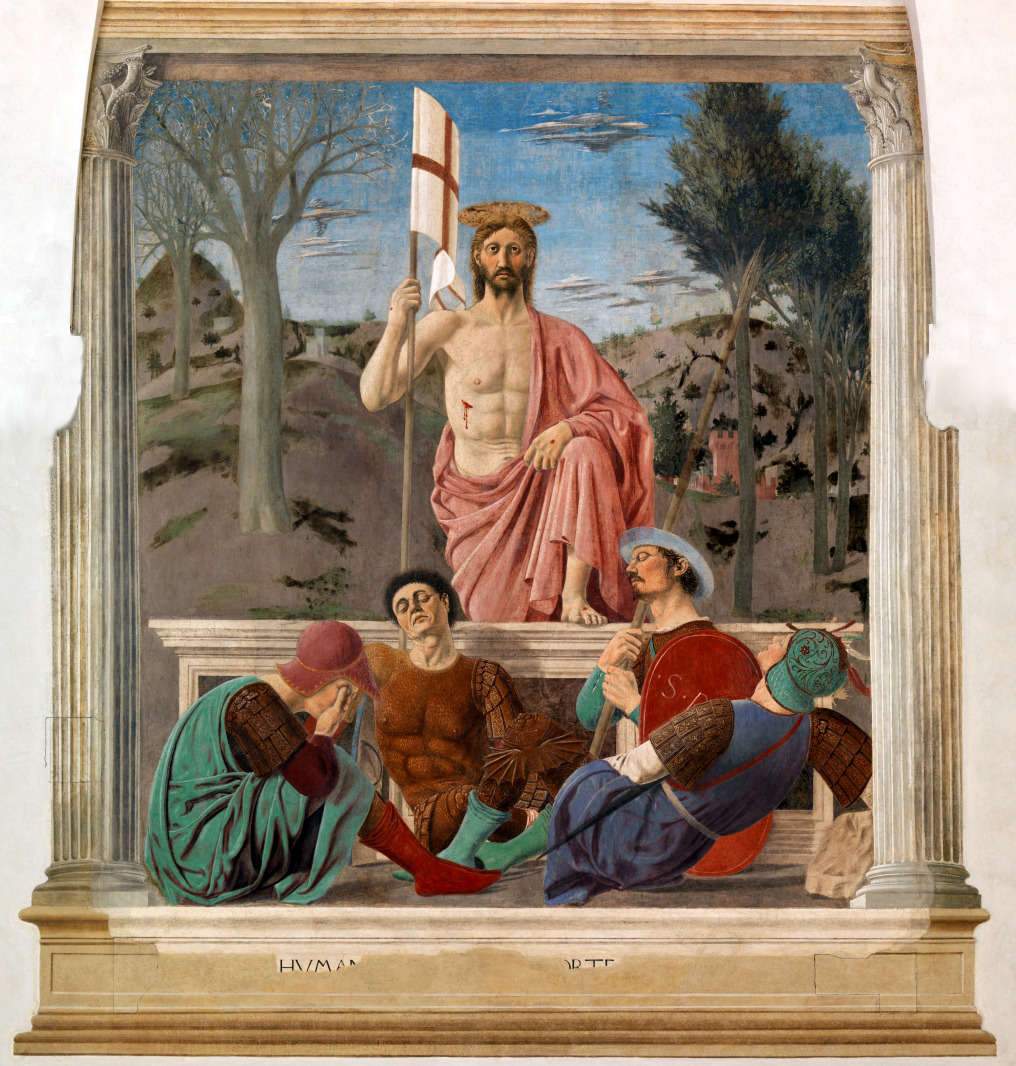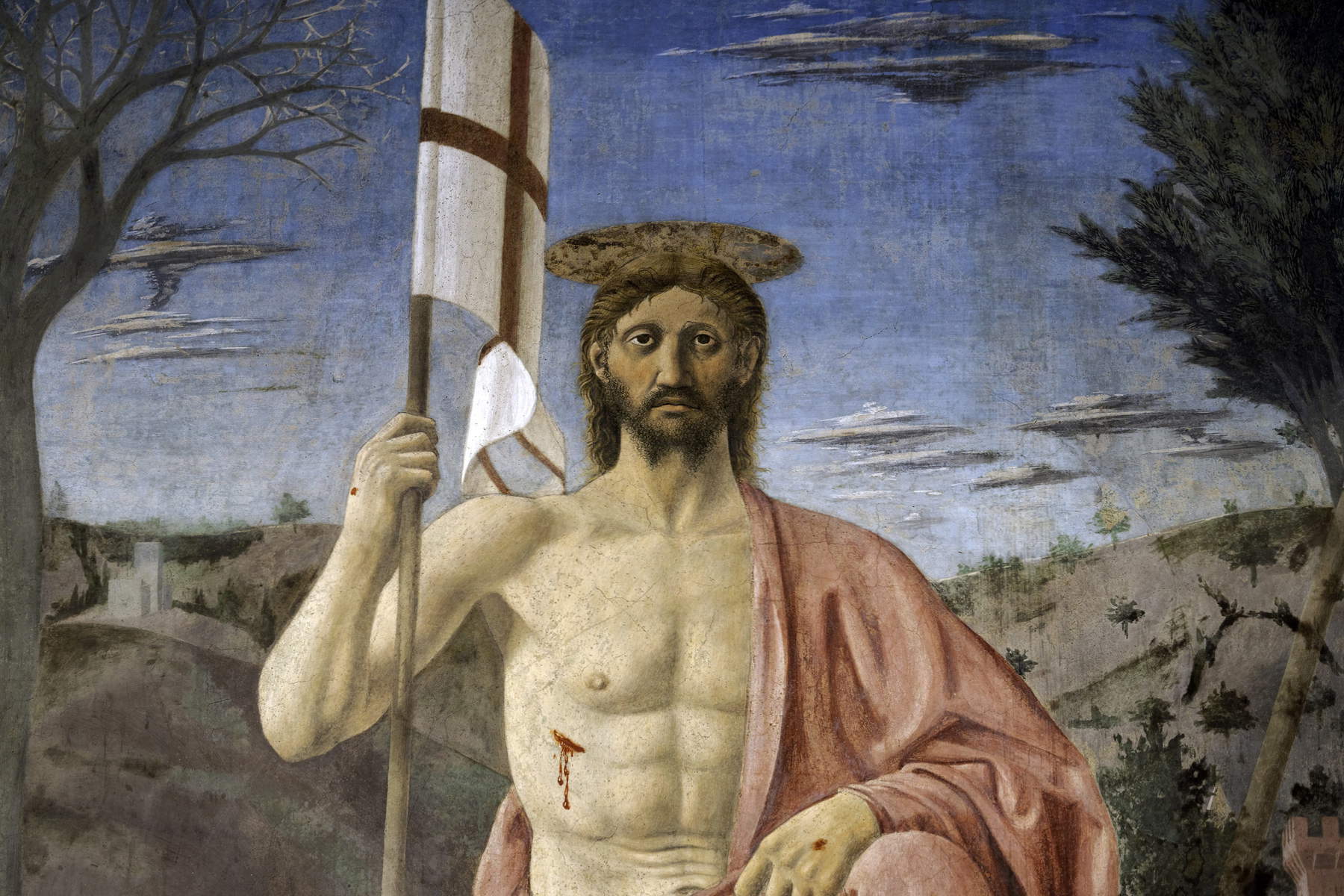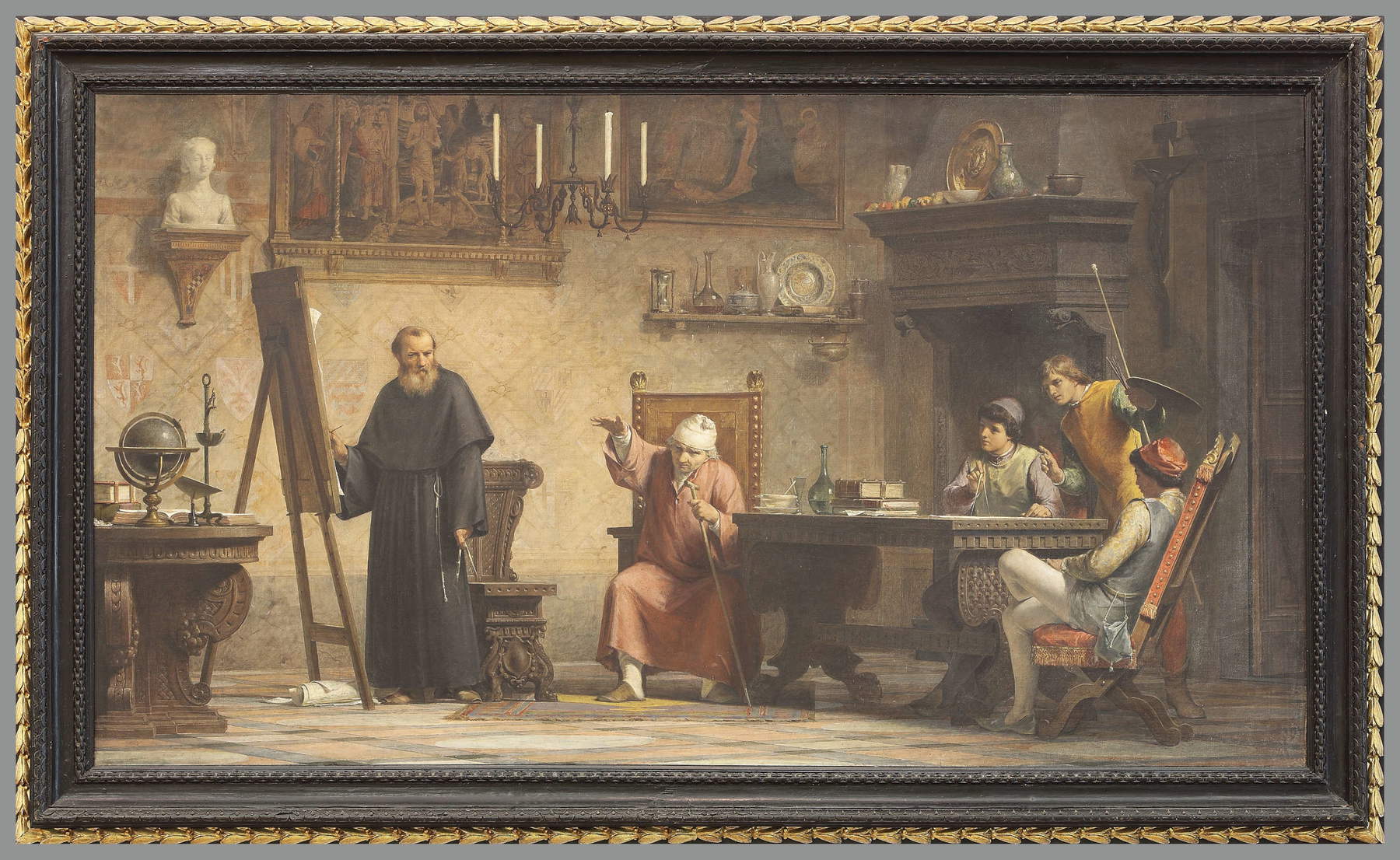At the eastern end of Tuscany, almost on the border withUmbria, nestled on the banks of the Tiber is the small town of Sansepolcro, a reality where art constitutes one of the primary reasons for attraction. Indeed, it is a land that has been the birthplace of important artists, including Santi di Tito, Raffaellino del Colle and Angiolo Tricca, just to name a few of the best known. But there is no doubt that the most famous is Piero della Francesca, whose history is deeply linked to that of the Tuscan town, not least because some of the most famous of his production, which today are housed in the Museo Civico that bears the artist’s name, in which there are also other important works not only by painters from Biturgia, but also by significant protagonists of art such as Pontormo, Andrea Della Robbia and Passignano.
In addition to the important Polyptych of Mercy by Piero’s hand and two fragments of frescoes, the museum also houses the wall painting of the Resurrection, which plays a major role in the history of art. Perhaps less well-known to the general public than other masterpieces enhanced by geographical fortune, its relevance, however, finds evidence in the appreciations that have been expended by countless intellectuals from different eras. It is impossible to say how many eyes have lingered on this masterpiece, let alone how many pages and ink have been consumed to talk about it.



Already Vasari in the life dedicated to Piero della Francesca recalled that the artist painted “in the Palazzo de’ Conservadori a Resurrection of Christ, which is held of the works that are in said city and of all his, the best.” In not at all different words, the French geographer and man of letters François Deseine recalled it in his travel account at the end of the 17th century. It would be necessary, however, to wait until the 19th century to find new remarks about Piero’s masterpiece, so much so that some have speculated that the work had been dulled in this period. Or perhaps the cooling of interest in the wall painting was due solely to changes in taste and more generally to a certain difficulty for travelers to access it. That complications insisted on for visiting is also testified to by the archaeologist Auston Henry Layard, who in 1855 recalled, “The room which it adorns, formerly the Conservators’ palace, has been used as a depot for the Pawnbroker’s Office, or pawnbroker’s bank run by the Government. The windows have been carefully closed to keep air and light out. Stacked on the walls are copper cauldrons, pots, potsherds, agricultural implements, hand spinning wheels, skeins of cotton thread, in short everything that belongs to an Italian peasant household and from whose pawning a few pennies can be made. If a stranger asks to see it he must wait for the availability of the various directors of the institute, who have different keys to prove their individual honesty.” Moreover, it was Layard himself who, by writing enthusiastically about that “sublime” work in the Quarterly Review, helped awaken the interest of fellow Anglo-Saxons.
They were then joined less than two decades later by the words of art historian John Addington Symonds, an important reference for Renaissance studies done in England: “The most sublime, the most poetic and the most terrible representation that has ever been made of the Resurrection,” impossible to forget because of those values of “estrangement from all earthly things which this masterpiece produces on the soul.” In 1910, on the other hand, it was the British writer of odeporical guides Edward Hutton who argued how “the Resurrection in the Town Hall is, in all probability, the finest depiction that exists in the world of the Triumph of Christ.”
But it is the words expended by Aldous Huxley in his book Along the Road that remain most famous and indelible. In fact, the author of The New World recoiled, calling the Resurrection “the most beautiful painting in the world,” and consumed several fiery pages in support of it, asserting how the figure of Christ managed to so assimilate physical and intellectual power in itself as to become “the resurrection of the classical ideal.” These pages of art history were not only of great importance in rediscovering the work but also famously saved it from certain destruction. In fact, in 1944 Captain Anthony Clarke remembered reading Huxley’s thought and therefore decided to end the carpet bombing of Sansepolcro.
But among the many words spent on the Resurrection there are, of course, also those of our own critics, for example, precisely with regard to this painting there was yet another page of the querelle between Bernard Berenson and Roberto Longhi, each tending to claim authorship of the rediscovery of Piero’s work. For the Lithuanian-born critic, that “sturdy stevedore” fully expressed the greatness of the artist from Biturgia, who had no urgency to communicate anything in his paintings, an “ineloquent” work, whose mere existence satisfies us in itself.
While Roberto Longhi dedicated to the Tuscan village’s Resurrection one of the most poetic and lofty ekphrasis in the history of Italian art: “A body of sublime module, nourished with rare saphenous pulp, pretext in the certainly classical toga, but dipped in a novel pink such as was never seen before in ancient painting. The Resurrection is an artful coincidence with the dawn on the Umbrian hills that, still dulled by the night, welcome that great rose of Christ, we are satisfied in the choral perfection of style that Piero lingers to communicate to us by so many signs.” And again, “Like the light of a sun that, after the long winter season, is reborn in an April dawn, and the mantle of Christ that, in that light, glows rosy, as if a peach tree had secretly blossomed on the first night of spring. The guardians of the tomb, even as sleep, symbolically, is expressed in them in its unconscious transcripts of agony, ecstasy, helpless bliss, and attention to secret things, still sleep nothing knowing what took place during the night. Christ, hideously sylvan, almost bovine, grim Umbrian settler risen even before dawn, resting one foot on the edge of the sarcophagus as on the field’s proda, gazes contritely at the bright estates of this sad world of his.”
Those offered so far are but a cruel selection of the many other pages written in favor of this work, including many other great names such as, for example, John Pope-Hennessy, Federico Zeri, Matteo Marangoni, Antonio Paolucci, Massimo Cacciari and many others.
Piero’s work was the subject of a recent and important restoration, which affected it from 2015 to 2018 and allowed for a deeper understanding of this masterpiece. It has emerged that the Resurrection is a mixed-media painting that, only minimally, was done in fresco, while for large areas dry painting was used, with tempera grassa and oil. But perhaps even more interesting is the fact that the restorers were able to confirm what before the restoration was attested to as a vague memory or rumor, namely that Piero’s work was not made on the wall where it now insists in the Hall of the Conservators, but probably on an exterior wall near the arengario, where the magistrates spoke to the people, and then moved to its present location in the sixteenth-century rearrangement of the room, in fact constituting one of the earliest examples of solid-ground transportation in the history of art.



The desire for the exaltation of civic pride is thus highlighted. After all, the painting “was intended to be nothing more than the coat of arms of the city,” as Paolucci puts it: in fact, Sansepolcro was believed to have originated around the oratory that held some relics of the Holy Sepulcher brought from Jerusalem by two pilgrims. The painting conceived for the Town Hall was part of a moment of expansion of the borough that saw the progress of a number of operations to ennoble the urban center. The dating of the work that is still debated today is therefore dated around the year 1460. Piero by that date was already a celebrated painter, with prestigious commissions scattered throughout central Italy behind him, but he still retained strong ties to the town of his birth, where he lived, worked and also participated in civic life with some public offices.
For these reasons, although the work can boast ambivalent registers of interpretation, one would almost come to believe that Piero’s operation rather than exalting a spiritual value, responds rather to logics of civic pride. In this way, one would perhaps inscribe the hieratic and guerrilla attitude of Christ, but also the landscape that unfolds behind him. In fact, the Risen One perfectly divides the background in two: on the left one notices dry trees, while on the right lush and leafy trees. Some critics have wanted to read in this a reference to the cyclical nature of the seasons, which for Clark reinforced the link between Christ and the ancient grain deities. While for Toloy it was an allusion to the eternal recurrence of spring, that is, to the direct link between the resurrection of nature and that of Christ.
But one would almost be inclined to think that in the paysage moralisé one could discern, as happens in Ambrogio Lorenzetti’s Allegory and Effects of Good and Bad Government, a reference to the alternating fortunes of the community and the city, an effect of theethos of the citizens, that is, understood as free choice, practical and moral. And if this is so, beyond all the superlatives so far, could one not then add that with Piero we are before the most secular Resurrection in the history of art?
Warning: the translation into English of the original Italian article was created using automatic tools. We undertake to review all articles, but we do not guarantee the total absence of inaccuracies in the translation due to the program. You can find the original by clicking on the ITA button. If you find any mistake,please contact us.